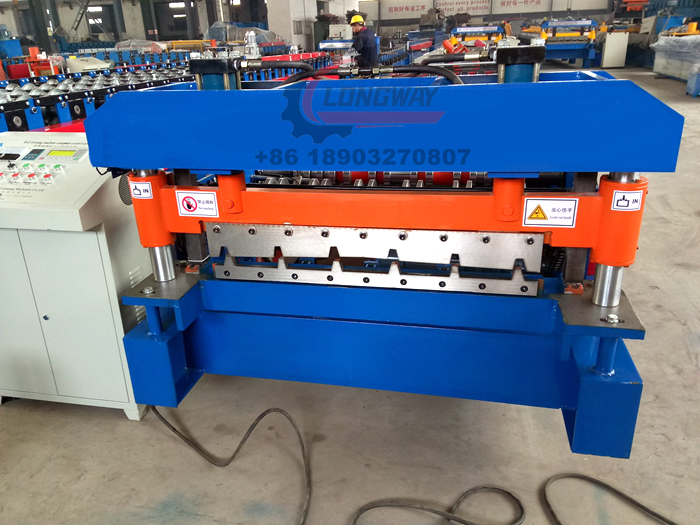Cold Rolled Steel C Section Profile Forming Equipment for Efficient Production
Cold Rolled Steel C-Section Roll Forming Machine Revolutionizing Construction and Manufacturing
In recent years, the construction and manufacturing industries have witnessed significant advancements in technology, streamlining production processes and enhancing efficiency. One of the most remarkable innovations in this domain is the Cold Rolled Steel C-Section Roll Forming Machine. This machine has transformed how C-sections are produced, offering numerous benefits for manufacturers and builders alike.
Understanding C-Section Steel
C-sections, or C-channels, are structural steel components with a cross-section shaped like the letter C. They are commonly used in a variety of construction applications, including frames, supports, and bracing systems. The versatility and strength of C-sections make them an ideal choice for building structures, manufacturing equipment, and even in the automotive industry.
Traditional methods of producing C-sections often involve cutting and welding flat steel sheets, which can be time-consuming and costly. However, the advent of roll forming technology has revolutionized this process, providing a more efficient and effective alternative.
What is a Cold Rolled Steel C-Section Roll Forming Machine?
A Cold Rolled Steel C-Section Roll Forming Machine is a specialized piece of equipment designed for the continuous production of C-section steel profiles
. The term cold rolled refers to the process of shaping the metal at room temperature, which helps maintain the integrity and strength of the material. This machine utilizes a series of rollers to progressively form a flat steel sheet into a C-profile.The roll forming process begins with feeding the flat steel sheet into the machine. As the sheet passes through the rollers, each set incrementally shapes the metal until it reaches the desired C-section profile. This method not only maintains the strength of the steel but also allows for precision engineering and rapid production rates.
Key Benefits of C-Section Roll Forming Machines
cold rolled steel c section roll forming machine

1. High Production Efficiency One of the most significant advantages of using a roll forming machine is its high production rate. Machines can produce C-sections continuously, drastically reducing the time required to manufacture steel components. This efficiency translates to lower labor costs and an overall decrease in production expenses.
2. Consistency in Quality The automated nature of roll forming machines ensures that each C-section produced is uniform in shape and dimension. This level of precision is crucial in construction, where structural integrity is paramount.
3. Material Savings The roll forming process generates less material waste compared to traditional methods. As the sheets are continuously shaped rather than cut, manufacturers can maximize the yield of the steel, leading to significant cost savings.
4. Flexibility and Customization Modern C-section roll forming machines can be easily adjusted to produce various sizes and designs of C-sections. This adaptability allows manufacturers to meet specific project requirements without investing in multiple machines or processes.
5. Reduced Lead Times With quicker production cycles and minimal setup times, roll forming machines can significantly reduce lead times. This efficiency is particularly beneficial for construction projects that operate on tight schedules.
6. Improved Safety Automation minimizes manual handling of heavy steel sheets, reducing the risk of injury in the workplace. Additionally, the precision of automated processes leads to fewer errors, enhancing overall safety on construction sites.
Conclusion
The Cold Rolled Steel C-Section Roll Forming Machine stands as a testament to the advancements in manufacturing technology. By streamlining the production of C-sections, this machine has not only increased efficiency but has also improved quality and safety in the construction and manufacturing industries. As demand for more sustainable and cost-effective building materials grows, the role of innovative machines like the C-section roll forming equipment will become increasingly vital in shaping the future of construction. Embracing this technology enables manufacturers to stay competitive in an evolving market while contributing to building structures that are safe, durable, and efficient.
-
Roof Panel Machines: Buying Guide, Types, and PricingNewsJul.04, 2025
-
Purlin Machines: Types, Features, and Pricing GuideNewsJul.04, 2025
-
Metal Embossing Machines: Types, Applications, and Buying GuideNewsJul.04, 2025
-
Gutter Machines: Features, Types, and Cost BreakdownNewsJul.04, 2025
-
Cut to Length Line: Overview, Equipment, and Buying GuideNewsJul.04, 2025
-
Auto Stacker: Features, Applications, and Cost BreakdownNewsJul.04, 2025
-
Top Drywall Profile Machine Models for SaleNewsJun.05, 2025








